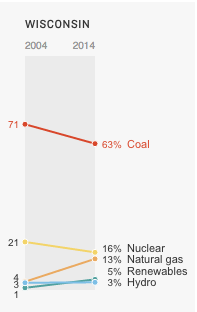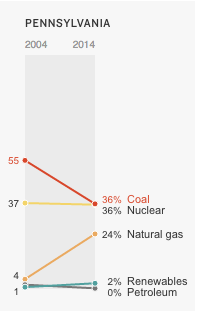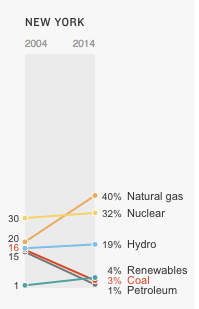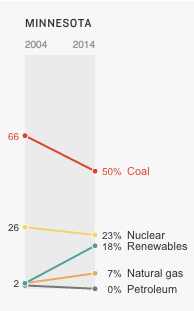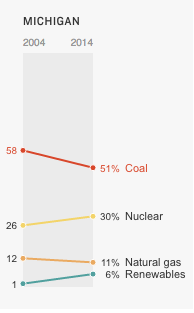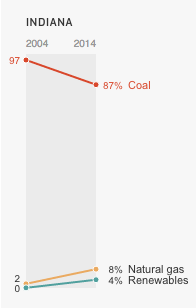This week Canada announced it was phasing out coal for making electricity by 2030 even though 4 Provinces still burn coal to boil water to turn a turbine to generate a current. Steam engine technology is 300 years old and it's at work everyday in the Great Lakes for coal (in all 8 U.S. states) and for nuclear power (7 U.S. states and Ontario).
The lifecycle and controlled explosions of coal and uranium on this planet are at the heart of our water dystopia. We are now at 401 ppm of C02 in the atmosphere and well above any concentration in the past 10,000 years and above a limit humans have ever lived in. Our inherited Age of Reason (also 300 years old) agrees that 350 ppm is sane limit for a stable climate. 2030 is a long, carbon-burning 13 years away and while coal use is dropping in U.S. states bordering on the Great Lakes, it still generates about half our electricity with no commitments of getting to 0.
Ontario phased out coal in 2015 and now uses nuclear for 62% of its electricity needs. Not only does uranium mining create toxic pits, support the growth of nuclear weaponry, and risk millions of people's health while in operation, but nuclear reactor waste is toxic for at least 250,000 years. The Great Lakes are only 15,000 years old. For 60 years North America has been exploding uranium to boil water to turn a turbine to generate a current and we still don't have a safe way to deal with our legacy of waste. Ontario recently decided to commit 12.6 billion to refurbish an aging reactor on Lake Ontario, while solar is stalled at 0 in the Ontario electricity mix. There are 43 nuclear hotspots around the Great Lakes which you can learn more about on the Great Lakes Commons Map and this recent TV Ontario discussion about Radioactivity in the Great Lakes. The nuclear industry is still hoping to bury nuclear waste was right next to Lake Huron forever.
Some statements to light the way forward
We didn't leave the Stone Age because we ran of our stones.
The nuclear industry is trying very hard to convince us that storing nuclear waste for 250,000 years is more practical than transitioning to green energy and storying energy overnight.
"The electric light did not come from the continuous improvement of candles." (Oren Harari)
The system isn't broken, it was built this way.
"Water is life, oil is death." (Van Jones)
Our society's energy needs depend on 300 year-old technology with toxic impacts lasting for 250,000 years. It uses up billions of scarce dollars to keep the status quo, while exceeding all warnings of carbon concentrations in the atmospheric commons. The fossil fuel and nuclear industries hold our economies and democracies hostage for their own profit with the biggest 'price' being paid by Indigenous communities.
Environmental injustices by the energy sector poison and criminalize poor, racialized, and Indigenous people around the world. Rather than use profit, investment, and taxes to build drinking water pipelines to native reservations/reserves and communities like Flint Michigan, government supported and subsided companies are building oil pipelines across the continent. By reflecting on the 5 statements above, how will we transition from non-renewable to renewable energy? Can we see the system for what it is and use our LOVE OF LIVE to power our shared future?
It's also been 300 years since Europeans used the Doctrine of Discovery and violence to establish the U.S.A. and Canada. Winona LaDuke makes the case for how our energy pipe-lines and legacy time-lines give us fresh sight-lines on how we use energy for life.
Tell us what you think by leaving a comment.

